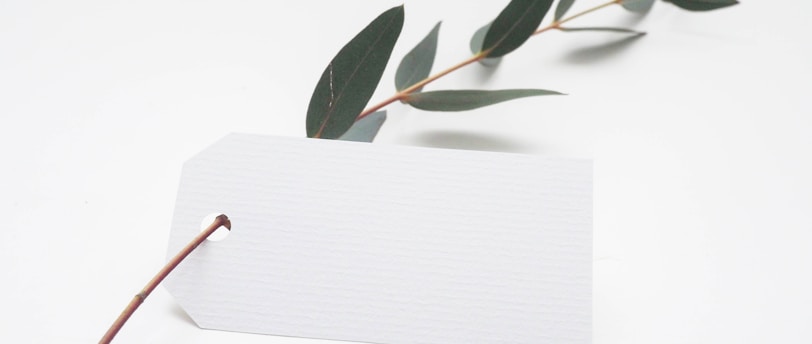Label Customization: How to Personalize Your Products and Boost Sales
In this article, we will discuss the benefits of label customization, how to implement it, and answer some frequently asked questions.
CUSTOMIZATION OPTIONS
Saleem Shahzad
5/9/20233 min read


Are you looking for ways to make your products stand out on the shelf? One effective solution is to customize your product labels. With label customization, you can create a unique and memorable branding experience for your customers. In this article, we'll explore the benefits of label customization, best practices for designing custom labels, and how to integrate personalized labels into your marketing strategy.
Benefits of Label Customization
Custom labels offer numerous benefits for businesses of all sizes. Here are just a few advantages of personalized labeling:
1. Brand Differentiation
Custom labels allow you to differentiate your products from competitors. By creating a unique label design, you can establish a strong brand identity and stand out in a crowded market.
2. Increased Visibility
Personalized labeling can also increase product visibility on store shelves. Eye-catching designs and colors can draw customers' attention and encourage them to pick up your product over others.
3. Improved Brand Perception
Custom labels can improve your brand's perception among consumers. Professional, high-quality labels can communicate that your brand is trustworthy, established, and committed to quality.
4. Better Customer Engagement
Personalized labeling can also improve customer engagement. Labels with unique designs or personalized messages can create an emotional connection with customers and encourage them to share their experience with others.
Best Practices for Designing Custom Labels
When designing custom labels, there are a few best practices to keep in mind. Here are some tips to ensure your labels make a lasting impression:
1. Use High-Quality Materials
Choose high-quality label materials that are durable and resistant to wear and tear. This will ensure your labels look professional and maintain their appearance over time.
2. Keep It Simple
Avoid cluttering your label design with too much information or too many graphics. Instead, focus on a simple, clean design that highlights your brand and product.
3. Use Contrasting Colors
Contrasting colors can make your label design stand out and increase visibility. Choose colors that complement your brand's color palette and create a cohesive look.
4. Consider Label Shape and Size
Think about the shape and size of your labels and how they will fit on your product packaging. Labels that are too large or too small can detract from the overall design and impact.
5. Incorporate Personalization
Finally, consider incorporating personalization into your label design. This can include adding customers' names or personalized messages, or using QR codes to direct customers to a personalized landing page.
Integrating Personalized Labels into Your Marketing Strategy
Personalized labels can also be used as part of your marketing strategy to increase brand awareness and customer engagement. Here are a few ways to integrate personalized labels into your marketing efforts:
1. Social Media Campaigns
Use personalized labels to launch social media campaigns. Encourage customers to share photos of your products with custom labels and create a branded hashtag to track engagement.
2. Limited Edition Products
Create limited edition products with personalized labels to generate excitement and encourage customers to make a purchase.
3. Event Giveaways
Use personalized labels as event giveaways to create a memorable brand experience and encourage attendees to share their experience with others.
Conclusion
Label customization is a powerful way to differentiate your products, increase visibility, and improve customer engagement. By following best practices for label design and integrating personalized labels into your marketing strategy, you can create a memorable branding experience that sets your business apart from the competition.
FAQs
1. What kind of information should be included on a custom label?
Custom labels should include basic product information, such as product name, ingredients, and usage instructions, as well as your branding elements, such as your logo.
2. What label materials are best for customization?
High-quality label materials that are durable and resistant to wear and tear are ideal for customization. These may include vinyl, polyester, or polypropylene, among others.
3. How can I ensure my label design is effective?
To ensure your label design is effective, keep it simple and focused on your brand and product. Use contrasting colors and consider label shape and size. Incorporating personalization can also increase engagement.
4. Can personalized labels be used for all types of products?
Yes, personalized labels can be used for a wide range of products, including food and beverages, cosmetics, household goods, and more.
5. How can I integrate personalized labels into my marketing strategy?
You can integrate personalized labels into your marketing strategy by using them for social media campaigns, limited edition products, and event giveaways. This can increase brand awareness and customer engagement.
